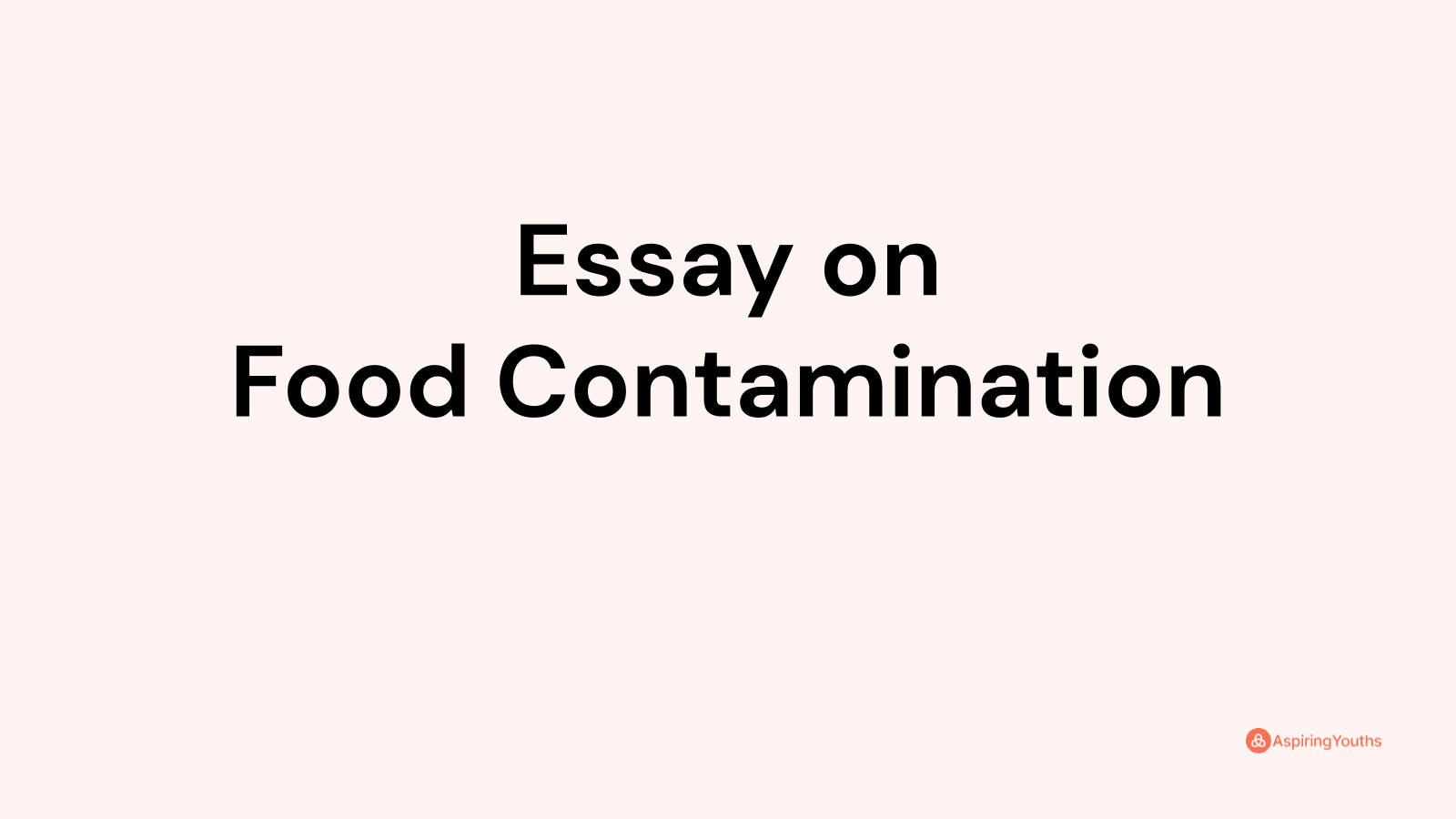Contamination food draw essay – Embarking on the exploration of food contamination, this essay delves into the diverse sources of contamination, its potential health hazards, and the measures implemented to ensure food safety. By shedding light on this critical topic, we aim to equip readers with a comprehensive understanding of food contamination and its implications.
Food Contamination: Contamination Food Draw Essay
Sources and Types of Food Contamination
Food contamination can occur from various sources, leading to different types of hazards:
Microbial Contamination
- Bacteria: Salmonella, E. coli, Campylobacter, Listeria monocytogenes
- Viruses:Norovirus, Hepatitis A
- Parasites: Toxoplasma gondii, Trichinella spiralis
Chemical Contamination
- Pesticides:Organophosphates, carbamates
- Heavy metals:Lead, mercury, cadmium
- Cleaning agents:Quaternary ammonium compounds, chlorine
Physical Contamination
- Foreign objects:Glass, metal, plastic
- Natural toxins:Mycotoxins, shellfish toxins
- Allergens:Peanuts, dairy, eggs
Cross-Contamination
This occurs when microorganisms or other contaminants are transferred from one food to another, often through improper handling or storage.
Environmental Contamination
This occurs when food is exposed to contaminants from the environment, such as soil, water, or air pollution.
Food Contamination: Contamination Food Draw Essay
Food Contamination: Effects and Consequences
Short-term Health Effects
- Nausea, vomiting, and diarrhea
- Abdominal pain and cramps
- Fever and chills
- Headache and fatigue
Long-term Health Effects
- Organ damage (e.g., liver, kidney, brain)
- Cancer
- Chronic illnesses (e.g., irritable bowel syndrome, Crohn’s disease)
Foodborne Illnesses and OutbreaksFood contamination can lead to foodborne illnesses, which are caused by harmful bacteria, viruses, or parasites. Outbreaks occur when multiple people become ill from consuming the same contaminated food. Economic and Social ConsequencesFood contamination can have significant economic and social consequences, including:
- Lost productivity due to illness
- Medical expenses
- Reputational damage for food businesses
- Public health emergencies
Food Contamination: Prevention and Control, Contamination food draw essay
Food safety and hygiene practices are crucial in preventing food contamination. These practices include maintaining clean and sanitary food preparation areas, proper food handling techniques, and temperature control to inhibit bacterial growth.Food regulations and inspections play a vital role in ensuring food safety.
Government agencies establish and enforce food safety standards, conduct regular inspections of food establishments, and recall contaminated products to protect consumers from potential health hazards.Technologies and methods are employed to control food contamination. Food irradiation, a process that exposes food to ionizing radiation, effectively eliminates bacteria, viruses, and parasites.
When writing an essay on contamination food draw, it’s important to consider the potential chemical hazards associated with food. Chemical hazard food draw can occur when chemicals, such as pesticides or cleaning agents, contaminate food. This can pose a serious health risk to consumers.
Therefore, it’s crucial to understand the different types of chemical hazards and how to prevent them when discussing contamination food draw in an essay.
Antimicrobial packaging, which incorporates antimicrobial agents into food packaging materials, helps prevent microbial growth and extend shelf life.
Food Contamination: Contamination Food Draw Essay
Food Contamination: Detection and Diagnosis
Detecting and diagnosing food contamination is crucial for safeguarding public health and preventing foodborne illnesses. Various methods are employed to identify and characterize foodborne hazards.
Food Testing
Food testing involves analyzing food samples to detect the presence of pathogens, toxins, or other contaminants. This can be done through microbiological, chemical, or physical methods.
Microbiological testing detects the presence of bacteria, viruses, parasites, or fungi in food. It involves culturing food samples in specific media to allow the growth and identification of microorganisms.
Chemical testing detects the presence of toxins, pesticides, or other chemical contaminants in food. It employs analytical techniques such as chromatography, spectroscopy, or immunoassays to identify and quantify specific chemicals.
Physical testing examines food samples for foreign objects, such as glass, metal, or plastic fragments. It involves visual inspection, X-ray screening, or metal detectors.
Food Surveillance
Food surveillance involves monitoring foodborne illness outbreaks and tracking food contamination trends. It helps identify potential hazards and target interventions to prevent future outbreaks.
Surveillance systems collect data from multiple sources, including healthcare providers, foodborne illness outbreak reports, and food safety agencies. This data is analyzed to identify patterns, trends, and potential sources of food contamination.
Challenges and Limitations
Detecting food contamination can be challenging due to several factors:
- Low levels of contamination:Some pathogens or toxins may be present in very low levels, making detection difficult.
- Intermittent contamination:Contamination may occur sporadically, making it challenging to detect through routine testing.
- Matrix effects:The composition of food can interfere with testing methods, affecting the accuracy and sensitivity of detection.
Despite these challenges, advancements in food testing and surveillance technologies are continuously improving our ability to detect and diagnose food contamination.
Closing Notes

In conclusion, food contamination remains a prevalent concern, with far-reaching effects on public health and the food industry. By adopting stringent food safety practices, implementing effective detection methods, and promoting consumer awareness, we can collectively mitigate the risks associated with contaminated food.
Embracing a collaborative approach is paramount to safeguarding the integrity of our food supply and ensuring the well-being of our communities.


